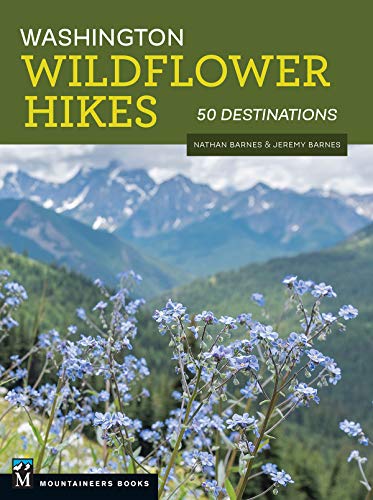Mt. Washington Trail
Hike through a maze of forest roads to reach big views of Mt. Rainier and the surrounding landscape along this often-overlooked trail.
Total Distance: 8.5 miles
Total Ascent: 3400ft
Highest Point: 4420ft
Total Ascent: 3400ft
Highest Point: 4420ft
To get there, take I-90 to Exit 38 and head right. Almost immediately, take a right onto a gravel road to the Upper Twin Falls Trailhead. View Google Directions >>
Finding the trail is the trickiest part of this hike, as it is unsigned. From the Upper Twin Falls Trailhead, take the spur up to Iron Horse Trail and head right. Keep an eye out for a small trail to your left, not more than a few hundred feet after you get on the Iron Horse. Depending on the time of year it can be a little overgrown. Once you find the trail and start up, the route becomes increasingly rocky, as it wanders through alder and maple, past streams and waterfalls. Before long you’ll encounter the first of many rock walls that attract the bouldering and climbing crowd. On summer days you’ll see climbers roped in and clambering up rock walls just off the trail.
The first few miles of trail are the most difficult. Expect long and steady inclines. At roughly two miles you’ll hit the Owl Hike Spot, a small viewpoint carved out of the trees opposite a sheer rock wall. Years ago, the Mountaineers had a number of Owl Hikes - short hikes close to the city that could be done after work and into the evening - though today this turnaround point seems to be the only lingering legacy of the Owl Hikes. The spot offers some good views of Rattlesnake Ledge, Cedar Butte and Rattlesnake Lake, and wall serves as a makeshift bench for taking it all in. From here on out the trail is pretty friendly, mild inclines intermingled with lengthy distances of level ground.
Eventually you’ll break out of the trees and into meadows revealing a spectacular view of Mt. Rainier presiding over the Cedar River Watershed. From the summit you can easily pick out Little Si, Mt. Si, Mt. Teneriffe and Green Mountain. Mailbox Peak to the immediate northeast, peeking out from behind another ridge of Mt. Washington. Settle in to soak up the view.
This is an engaging route. The trail regularly transforms itself from friendly ex-logging road - spacious, flat, and graveled - to intermittent streambed, complete with water-carved contours and exposed rock. It’s not a particularly easy hike, but the views are excellent. As an added bonus this trail is a little under the radar, so it makes a great alternative to Mailbox or Mt. Si on a summer weekend.
The first few miles of trail are the most difficult. Expect long and steady inclines. At roughly two miles you’ll hit the Owl Hike Spot, a small viewpoint carved out of the trees opposite a sheer rock wall. Years ago, the Mountaineers had a number of Owl Hikes - short hikes close to the city that could be done after work and into the evening - though today this turnaround point seems to be the only lingering legacy of the Owl Hikes. The spot offers some good views of Rattlesnake Ledge, Cedar Butte and Rattlesnake Lake, and wall serves as a makeshift bench for taking it all in. From here on out the trail is pretty friendly, mild inclines intermingled with lengthy distances of level ground.
Eventually you’ll break out of the trees and into meadows revealing a spectacular view of Mt. Rainier presiding over the Cedar River Watershed. From the summit you can easily pick out Little Si, Mt. Si, Mt. Teneriffe and Green Mountain. Mailbox Peak to the immediate northeast, peeking out from behind another ridge of Mt. Washington. Settle in to soak up the view.
This is an engaging route. The trail regularly transforms itself from friendly ex-logging road - spacious, flat, and graveled - to intermittent streambed, complete with water-carved contours and exposed rock. It’s not a particularly easy hike, but the views are excellent. As an added bonus this trail is a little under the radar, so it makes a great alternative to Mailbox or Mt. Si on a summer weekend.
History
Originally named Profile Mountain, Mt. Washington was renamed for a likeness of George Washington on one of the mountain’s many exposed rock walls. Extensively logged decades ago, the main route to the top is almost entirely logging roads in various states of decay. Over the years, multiple routes have been blazed to the summit which can make the hike a little confusing. Occasionally an unofficial-looking sign will point you in the right direction, though none of the trails on Mt. Washington are really considered “official.” This is probably because Mt. Washington is managed piecemeal by the Forest Service and Washington Parks and Recreation. Half the mountain is part of Iron Horse State Park and the other half is in Mount Baker-Snoqualmie National Forest. To further complicate matters, there is at least one large privately owned plot on Mt. Washington. In the end, this means that trail maintenance is left to independent trailblazers and trail stewards like the Washington Trails Association.
Nearby hikes
Similar Difficulty
Similar Features












